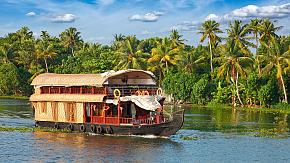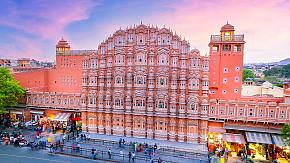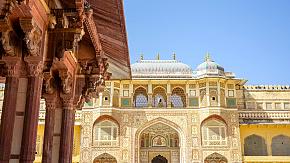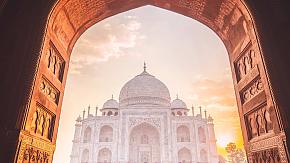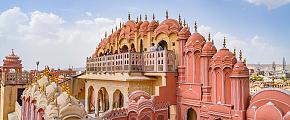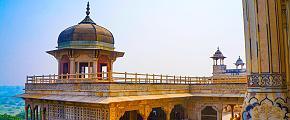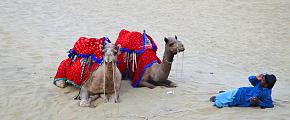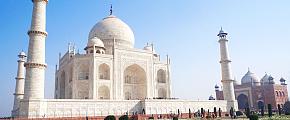Indian Money Rupee: Exchange Rate, Payment Methods & Tips
The India money rupee has a wide variety of designs, some featuring images of the country's famous landmarks like the Taj Mahal. They are also printed in different languages, such as Hindi, English, and local languages, reflecting its multilingual and cultural nature. Whether you're planning your India tour or want to learn about India currency, this guide will help you get a lot of information about the rupee, including denominations, exchange rates, how to exchange, payment methods, and more tips.
- What Currency Does India Use
- Indian Rupee Exchange Rates
- Can I Take Rupees to India
- Can I Take Foreign Currencies to India
- What Is the Best Currency to Take to India
- How to Get Rupees in India
- Pay With Credit Cards in India
- How to Use Leftover Rupees
- Cost in India
- Tipping Etiquette in India
- Bargain in India
What Currency Does India Use
The official currency of India is the Indian rupee, abbreviated as INR, with the symbol ₹, and 1 rupee is divided into 100 paise. The denominations of notes in circulation are 5,10, 20, 50, 100, 200, 500, and 2,000 rupees; The coins come in denominations of 25 paise, 50 paise, 1 rupee, 2 rupees, 5 rupees, and 10 rupees.
Tip: The US dollar is also widely accepted in India, but it is still recommended to get some rupees in small denominations which can be used in remote areas where the US dollar may not be accepted. Additionally, it should be noted that the banknote of 1,000 rupees is no longer valid as it was abolished in 2016.
Indian Rupee Exchange Rates
The table below shows the exchange rate between the Indian Rupee (INR) and some major currencies, including the US dollar (USD), British pound (GBP), Australian dollar (AUD), Euro (EUR), Canadian Dollar (CAD), and New Zealand Dollar (NZD). The data provided in this table was written in June 2025 and is for reference only.
| Foreign Currency Value | Foreign Currency Value in Indian Rupee |
| 1 US Dollar | 85.79 Rupees |
| 1 British Pound | 116.39 Rupees |
| 1 Australian Dollar | 55.79 Rupees |
| 1 Euro | 98 Rupees |
| 1 Canadian Dollar | 62.77 Rupees |
| 1 New Zealand Dollar | 51.79 Rupees |
Can I Take Rupees to India
According to Indian law, there are limits on the amount of Indian currency that can be taken in or out of the country. You are allowed to bring cash not exceeding 25,000 INR (approx. 300 USD) when entering or leaving India. More than this amount, it's necessary to declare and go through relevant procedures in accordance with the regulations.
Can I Take Foreign Currencies (Like Dollars and Euros) to India
Foreign currencies are permitted to be taken into India and there is no limit to how much a visitor can take. Visitors can bring up to US$5,000 or its equivalent in another currency in coins and notes, or US$10,000 or its equivalent in another currency in coins, notes, and traveler’s checks to enter India without needing to declare it. The declaration is required if the amount is higher.
Before your departure, it's best to prepare money in different forms: a combination of cash, credit cards, and traveler's checks just in case you need them. It's also advisable to keep them in different places (money belts, secret pockets, a Ziploc bag, or even a washbag). As the saying goes "Don't keep all your eggs in one basket".
What Is the Best Currency to Take to India
To ensure that your India trip goes smoothly, it is best to check in advance and make sure that your home currency can be exchanged for the rupee in India. Major currencies such as USD, GBP, and EUR can be easily exchanged for rupees in India. Generally speaking, the exchange rate of USD to INR is more favorable than that of other foreign currencies in India. If your home currency is not one of the world's major currencies, it's recommended to convert to USD before departure to enjoy a favorable exchange rate.
How to Get Rupees in India
You will find it easy to change major currencies (e.g. US dollars, Pounds Sterling, and Euros) into rupees throughout India. Australian and Canadian dollars and other currencies are accepted by some banks.
Airports: You can easily get rupees at currency exchange booths at the airport upon arrival. But it's advisable to only exchange a small amount of rupees for incidentals and transportation to your hotel and downtown where you often get better rates.
Hotels: Many hotels offer money exchange services. Before booking, check if the hotel you want to book can change money and ask for details of the rate.
ATMs: ATMs often offer the best exchange rates and can be easily found at airports, urban areas, or outside of banks. Most ATMs accept MasterCard, Visa, Cirrus, and Maestro. The maximum amount of Indian rupees you can withdraw in one transaction varies, from ₹2000 / US$24 to ₹10,000 / US$ 120. The Indian bank charges a set fee (usually ₹150 / US$2 to ₹300 / US$4) instead of a percentage, so it's better to withdraw enough for your upcoming needs in each transaction rather than smaller amounts.
Tips:
1). Note that ATMs in India typically accept 4-digit codes. If your PIN is longer, ask your bank if it can be changed before your trip.
2). Before traveling, make sure your card can access banking networks in India and learn about the charges.
3). Let your bank know that you will be using your card in India so that it won't be blocked.
4). Take care of your encashment certificates (receipts) which you receive after finishing an exchange transaction. They will allow you to change your leftover rupees back to your local currency when you leave India.
5). Please avoid accepting damaged or soiled notes as they may be refused when you attempt to use them.
6). Refrain from exchanging money with unauthorized money changers as it's against the law.
Pay With Credit Cards in India
Credit cards are widely accepted in India, especially in major cities such as Delhi and Mumbai. Many hotels, upmarket restaurants, and shops allow you to pay by credit card. Smaller sellers only accept cash, so it's best to keep some rupee as a backup option. The most widely accepted cards In India are MasterCard and Visa. American Express is generally accepted by major hotels and restaurants. It's possible to withdraw cash advances at some banks.
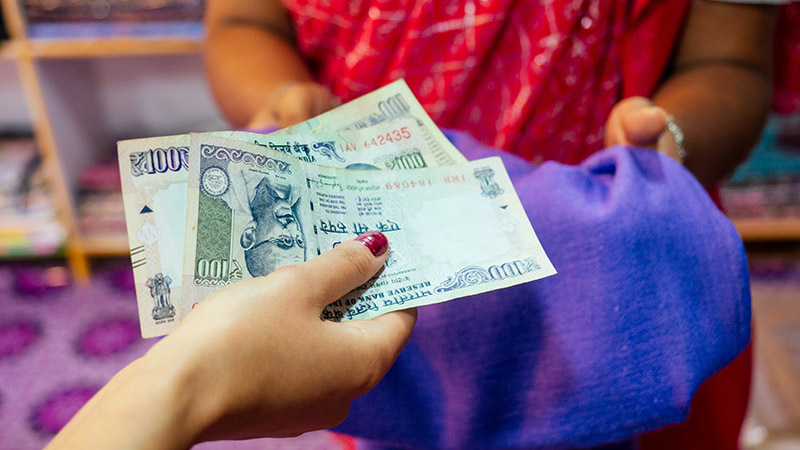 Paying Cash in Markets
Paying Cash in Markets
How to Use Leftover Rupees
There are many ways to deal with the leftover rupees after your trip. You can keep them for your next visit to India. It's also a good idea to give rupees as souvenirs to your family and friends to share your travel experience. Besides, keep them as a collection to keep precious memories of your trip. What's more, large international airports in Delhi, Mumbai, and Bangalore usually have exchange counters to easily exchange leftover rupees into your local currency, and major banks and exchange service providers also provide such services. Please remember that you can only take a maximum of 25,000 rupees when leaving India.
Cost in India
The peak period for travel to India is from November to February when there are more people and the price of transport and accommodation can be high. There are few people in the rainy season (June - September), and the cost is relatively low. Additionally, during festivals, such as Holi, Independence Day, and Diwali, the cost of accommodation goes up. How much you spend largely depends on your travel style and budget. There are hotels for different budgets, from simple to luxury. An average seven-day trip to India will cost from $350 to $700, including accommodation, meals, transportation, and some tourist activities. A luxury trip will cost more than $1,000 to $1,800.
Tipping Etiquette in India
Tipping is mostly optional in India and does not follow strict guidelines. The average tip is usually about 10% depending on the quality of the service.
Restaurants and hotels: Check if the restaurant/hotel has added a service charge to the bill; if not, tip around 10% for standard service.
Guides and Drivers: It is customary to tip guides and drivers after tours. Tipping ₹200 to ₹350 (US$3–US$5) per day is reasonable.
Taxis and rickshaws: It is not necessary, but it's good to tip if you really enjoy their services.
Spas and Salons: Tipping is not expected, but you can give a small tip if you think the service provided is excellent.
Bargain in India
Bargaining is part of the local culture in India. In most cases, it is not only allowed but also expected in local markets and most shops. Most sellers don't expect you to pay the asking price, so don't be afraid to bargain. However, haggling is not appropriate in more upmarket shops where prices are fixed.
Tips:
1). Dehli's Chandni Chok and Jaipur's Johari Bazaar in the Old City are great places to shop and experience the bargaining culture.
2). A general rule is not to accept more than half of the initial asking price.
3). When negotiating the price, do it with a smile and a sense of humor which makes it easier for you to get the price you want without offending the vendor.
4). Go to the market early and you may get a better price as the first sale of the day is considered lucky by sellers. 5). It is not recommended to haggle over small amounts as a few rupees matter more to the vendor than to you.
Plan Your India Tour With Odynovo
Start your India tour with Odynovo, which opens the door to exploring this diverse land. Odynovo will ensure that your journey is pleasurable and you will uncover India's rich history, cultural heritage, and natural beauty with confidence. Don't hesitate to contact us or write to [email protected] !
Related Posts You May Like
What Our Clients Say
Explore the latest verified reviews of Odynovo's travel services on Tripadvisor, Google, Trustpilot, Product Review and more trusted platforms.

